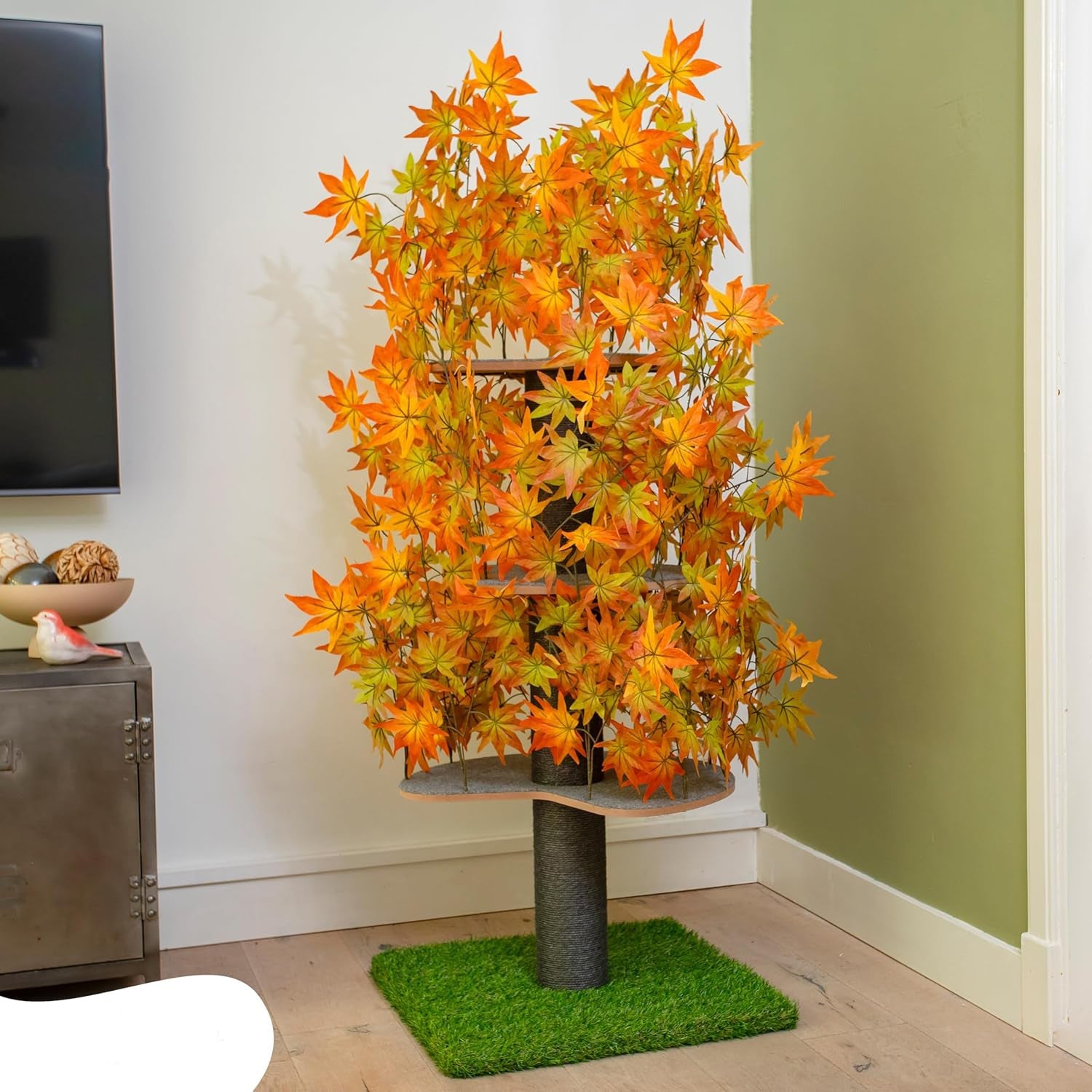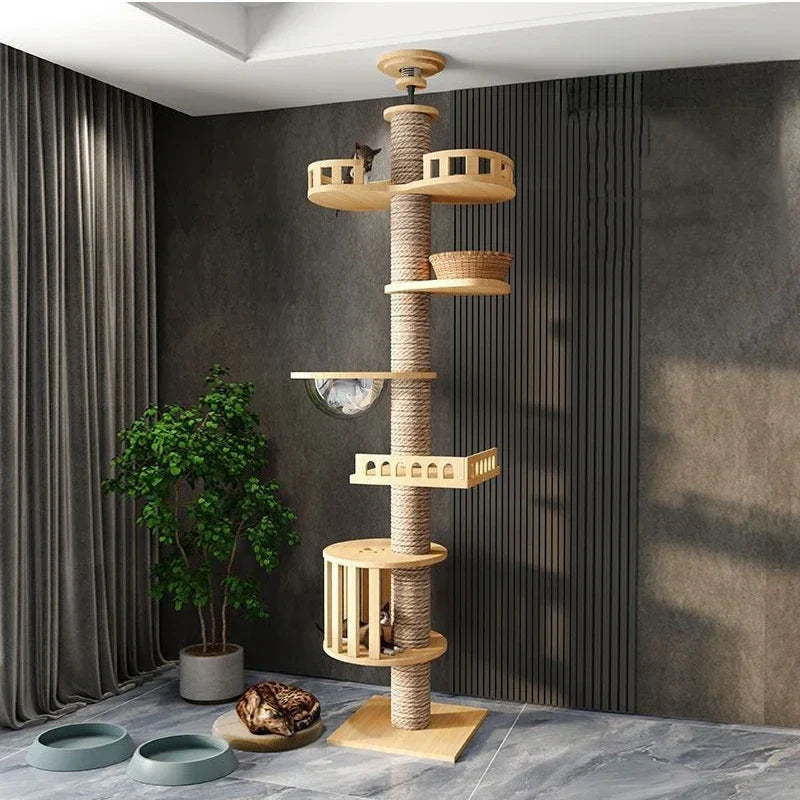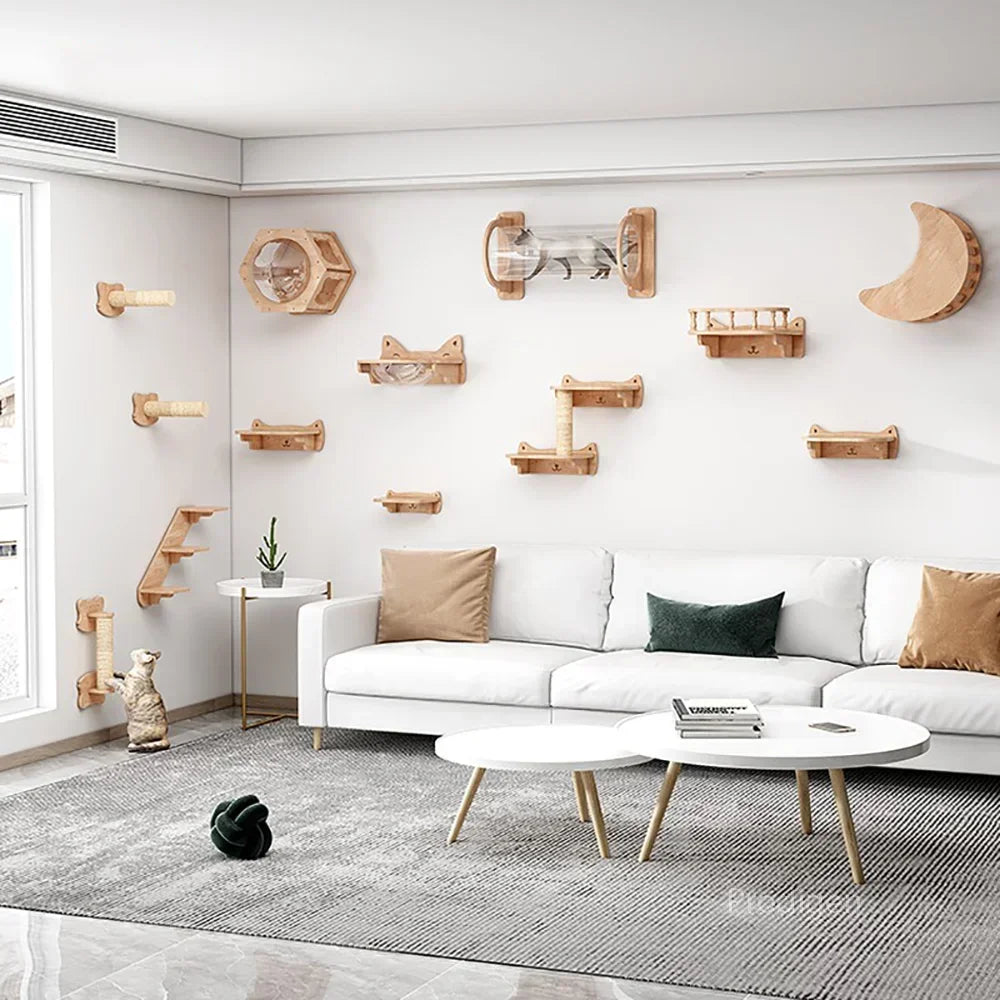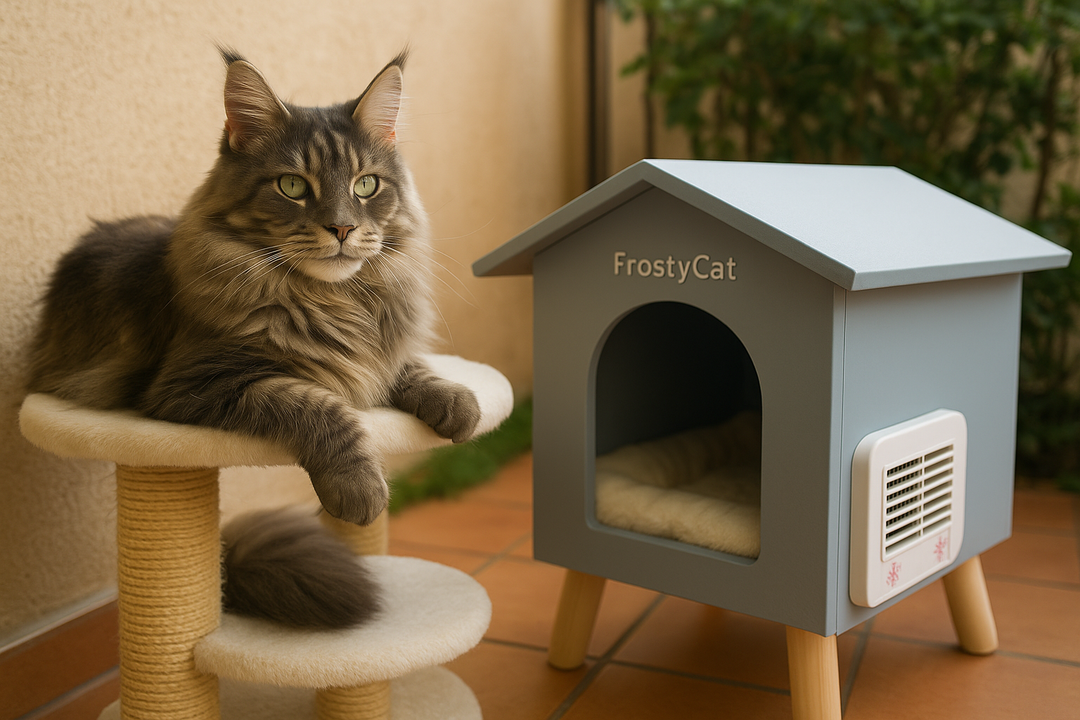How to install a wall-mounted cat tree?
Complete Guide to Installing Cat Wall Structures: aesthetics, safety, installation method, we tell you everything!
Introduction
Cats love to climb, jump, and explore high places. To meet these natural needs, installing wall structures specifically designed for them is a great idea. These installations can include scratching posts, ladders, houses, platforms, suspension bridges, hammocks, and much more. Not only do they enrich your cat's environment, but they also add a unique aesthetic touch to your home. In this guide, we'll explain how to install these wall structures safely and effectively, taking into account different wall types and your cat's needs.
Why install wall structures for cats?
Environmental enrichment
Cats, by nature, love to climb and perch in high places. These activities allow them to satisfy their predatory instincts, guard their territory, and feel secure. Wall structures provide an excellent opportunity to create a stimulating environment for them.
Space saving
In small apartments, floor space is often limited. Wall-mounted structures allow you to utilize vertical space, giving your cat more room to play and rest without encroaching on your living space.
Aesthetics and decoration
When well-designed, wall structures can become an attractive decorative element in your home. They can be customized to fit perfectly into your interior, adding a touch of originality and fun.
Health Benefits
Climbing and jumping help keep your cat fit. These regular physical activities are essential to prevent obesity and associated health problems.
Necessary materials and tools
Wall structures
- Wall-mounted scratching posts : Perfect for your cat to sharpen its claws while still utilizing vertical space.
- Ladders : Allow your cat to climb from one level to another.
- Wall houses : Provide a comfortable and secure place for your cat to rest.
- Platforms : Provide elevated rest and observation points.
- Suspension Bridges : Add elements of play and movement between different structures.
- Wall hammocks : For moments of relaxation while suspended.
Tools
- Electric drill : Essential for drilling holes in walls.
- Screws and anchors : Suitable for the type of wall you are working on (concrete, brick, plasterboard).
- Screwdriver : To fix the screws.
- Spirit level : To ensure that structures are horizontal.
- Tape measure : For measuring distances and heights.
- Pencil : To mark drilling points.
- Stepladder : To reach heights safely.
- Strong glue (optional): For additional fixation.
Choice of wall structures
Wall scratching posts
Wall-mounted scratching posts are essential for allowing your cat to scratch without damaging your furniture. They should be placed at a height where your cat can easily reach by stretching. A good starting point is to install the bottom of the scratching post about 30 cm from the floor.
Ladders and ramps
Ladders and ramps allow your cat to easily move between structures. They should be angled at a safe and comfortable angle so your cat can climb without difficulty. A 45-degree incline is often ideal.
Wall houses and niches
Wall-mounted houses provide a safe and comfortable haven for your cat. They should be placed at accessible heights but high enough for your cat to feel secure. A height of around 1.5 meters is generally appropriate.
Platforms
The platforms should be spaced so that your cat can easily jump from one to the other. The recommended spacing is 30 to 45 cm, depending on your cat's agility.
Suspension bridges
Suspension bridges add a playful and stimulating dimension. They should be securely attached to the walls to ensure your cat's safety. The height and length of the bridge should be adapted to the available space and your cat's agility.
Wall hammocks
Wall-mounted hammocks should be securely mounted and placed at a comfortable height for your cat. Make sure they are large enough for your cat to rest comfortably.
Preparation and planning
Know your wall
Before you begin installation, it's crucial to know the type of wall you'll be working on. Different types of walls require different types of fasteners:
- Plasterboard walls : Use special plasterboard anchors.
- Concrete walls : Use metal anchors and heavy-duty screws.
- Brick walls : Use anchors suitable for brick walls.
When choosing fasteners, seek advice from a professional or DIY retailer. Allow plenty of room and don't settle for a fastener that can only support your cat's weight. Cats are tricksters and are capable of many acrobatics that can put a strain on the structure!
Plan the location of structures
- Draw a plan : Draw a plan of your wall and mark the locations of the various structures. Take into account the height and distance between each element.
- Consider height : Structures should be placed at heights where your cat can easily climb and jump. An adult cat can jump up to about 1.5 meters (150 cm) from the ground. To jump from one platform to another, a distance of 30 to 45 cm is ideal for normal cats, and up to 60 cm for particularly agile cats.
- Ensure accessibility : Make sure each structure is easily accessible from the previous one. Ladders and ramps should be positioned to facilitate movement between levels.
Security and stability
- Check stability : Before permanently fixing each element, make sure that it is stable and does not wobble.
- Use sturdy fixings : Use suitable screws and anchors to ensure each structure is securely fixed to the wall.
- Test for safety : After installation, test each structure by applying pressure to ensure it can support your cat's weight without moving.
Installation of wall structures
Step 1: Mark the fixing points
Use a pencil to mark the fixing points on the wall according to your plan. Ensure the marks are aligned correctly using a spirit level.
Step 2: Drill the holes
Use a power drill to drill holes at the marked points. Make sure you drill holes that are the correct size for the anchors you are using.
Step 3: Insert the dowels
Insert the anchors into the drilled holes. Use a hammer if necessary to drive them in completely.
Step 4: Fix the structures
Secure each frame to the wall using suitable screws. Tighten the screws securely to ensure a secure fit.
Step 5: Check stability
Once all the structures are installed, check their stability again by applying pressure. Make sure that no structures wobble or move.
Step 6: Add the accessories
Add accessories like cushions, toys and decorations to make the structures more attractive and comfortable for your cat.
Tips for a successful installation
Adapt structures to your cat's abilities
- Observe your cat : Observe how your cat uses the structures and adjust them if necessary. For example, if your cat has difficulty climbing a ladder that is too steep, try repositioning it at a gentler angle.
- Start low : For older or less agile cats, start by installing structures at lower heights and gradually increase the height as your cat becomes more accustomed.
Spacing between structures
- Distance between platforms : Platforms should be spaced so that your cat can easily jump from one to the other. A distance of 30 to 45 cm is generally appropriate.
- Structure Height : Structures should be placed at heights where your cat can easily climb and jump. For young, agile cats, you can install higher structures, while for older cats, opt for lower heights.
Child safety
- Prevent child access : Place wall structures at heights that young children cannot reach. Make sure children understand that these structures are for cats only.
- Use strong fixings : Make sure all structures are securely fixed to avoid any risk of falling if a child tries to climb on the structure.
- Supervision : Supervise children's interactions with wall structures to ensure they do not attempt to use them.
Aesthetics and decoration
Choosing materials and colors
- Natural Materials : Use materials like wood, sisal rope, and artificial branches to give your wall structures a natural and harmonious look.
- Matching Colors : Choose colors that blend well with your interior decor. You can paint the platforms and wall houses in neutral shades or to match your walls.
Integration into the interior
- Discretion : If you prefer a discreet approach, opt for wall structures that blend into your decor. Use invisible fasteners and neutral colors.
- Decorative accent : If you want your wall hangings to be a stand-alone decorative element, choose bold designs and bright colors. Add decorative elements like lanterns and colorful pillows.
Creativity and personalization
- Adding Toys : Incorporate hanging toys or balls with bells to encourage your cat's play and curiosity.
- Cushions and rugs : Add soft cushions and rugs to the platforms to make the structures more comfortable.
- Lighting : Use string lights or small lamps to add a warm and aesthetic touch.
Examples of arrangements appreciated by cats
High-altitude course
- Stair-stepped platforms : Create a stair-stepped course with platforms arranged at different heights to encourage your cat to climb and explore.
- Footbridges and Suspension Bridges : Add footbridges and suspension bridges between platforms to provide varied and challenging paths.
Rest and observation areas
- Houses and Kennels : Install houses and niches high up to provide safe and comfortable resting areas.
- Wall Hammocks : Place wall hammocks in quiet corners where your cat can relax and observe its surroundings.
Play and exercise areas
- Wall-mounted scratching posts : Place scratching posts at different heights to encourage your cat to scratch while climbing.
- Ladders and ramps : Incorporate ladders and ramps to provide climbing and exercise opportunities.
Conclusion
Installing wall-mounted cat structures is a great way to create a stimulating and secure environment for your feline companion. By carefully planning the placement of the structures, using sturdy fasteners, and adapting the heights and spacing to your cat's abilities, you can create a vertical space that will enrich your cat's life while adding a unique aesthetic touch to your home.
Remember to consider the safety of young children and incorporate decorative elements to complement your existing interior design. With a little creativity and care, you can create a vertical paradise for your cat that will meet their natural needs while also being an attractive addition to your home.







